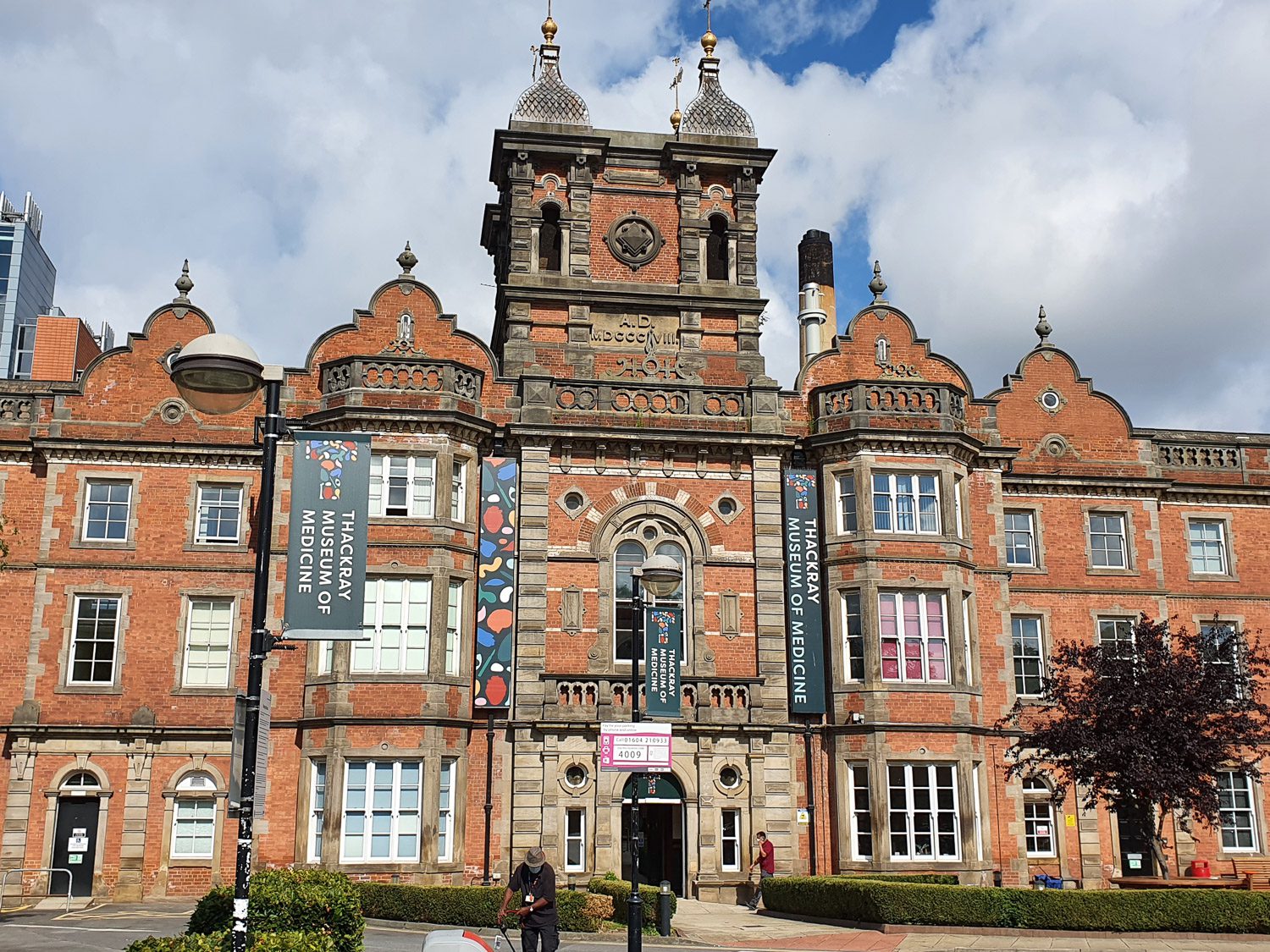This Leeds landmark in the Victorian style has a long, frightening and sometimes very confusing ages-long history. The most ghostly building in the city impresses with its beautiful architecture as well as the secrets and gossip that surround its past and present life. Learn more at leeds-future.
Since 1997, it has housed the Thackray Museum of Medicine. It exhibits tens of thousands of medical items and artefacts, demonstrating medical life and the diseases faced by the townspeople at different times. Some of them are terrifying medical equipment and a blood transfusion kit of Adolf Hitler. Thus, here, you can experience a wide range of feelings and impressions, from disgust to real delight.

From a workhouse for the poor to a hospital
The building was first opened as Leeds Union Workhouse for the poor population in 1861. The grey and unwelcoming building became a home for the homeless and people who couldn’t earn a living. Men and women came here to earn some money, and in return, were given hard labour and minimal food as payment. More than 700 city residents worked there to earn bread and porridge to survive in difficult times.
Over the years, the workhouse complex was added with new buildings, including a separate infirmary. During the First World War, it housed a war hospital. At the beginning of the 20th century, after some political changes and the introduction of new state support, the workhouses were discontinued. Thus, the building became an infirmary.
In 1925, the Leeds Union Workhouse infirmary was renamed St James’s University Hospital. At that time, medicine was at a very low level of development, most operations were performed without anaesthesia and very few patients survived the treatment. In addition, a series of epidemics devastated the infirmary, taking the lives of many of its patients. By 1945, the remaining premises of the workhouse had merged with the hospital, and in 1948, it became part of the NHS (Great Britain’s National Health Service).
In the 1990s, the Leeds authority decided that the old hospital premises were in an unsatisfactory state to provide modern public medical services. However, the building had a landmark status, therefore, MPs decided to place the Thackray Museum of Medicine here.

Charles Thackray’s family pharmacy business
The museum was based on a small family pharmacy, which was opened by Charles Thackray on Great George Street in 1902. Ambitious as he was, Charles succeeded in growing his pharmacy business into a major medical company that supplied drugs, medical instruments and equipment around the globe.
Eventually, in 1990, the business was sold to the multinational company DePuy Synthes (a subsidiary of Johnson and Johnson). The latter still manages an international orthopaedics research and development centre.
Charles’ grandson Paul, who became the company’s director and major shareholder, founded the museum to show the public the history of medicine. In addition, Paul Thackray has established a number of charity organisations to support the company’s collection as a resource for research and public education. These include the museum itself and the Thackray Medical Research Trust, which continues to fund the museum’s educational and research activities.

Impressive exhibits and amazing thematic exhibitions
The museum re-opened in 2021 after a major reconstruction, which cost £4 million. Today, the institution offers 11 permanent galleries that demonstrate the history of medicine from the Victorian period to the present day.
Visitors can enjoy walking among thematic exhibitions, easily immersing in the incredibly interesting and sometimes scary history of world medicine. Here, you can see a recreated operating room of the Victorian era and a copy of the slum streets of Victorian Leeds, which were a hotbed of death and diseases in the 19th century.
It is worth visiting the gallery dedicated to the achievements of health care in the Victorian era. It’s also interesting to learn about the life and work of various doctors who saved a lot of lives. In addition, visitors can learn how the medical system has resisted the main challenges of all times, namely natural disasters, pandemics and bloody wars.
The exhibition Behind the Microscope is ideal for a family pastime. Here, parents and children above 7 years old can explore the world of histopathology. Visitors can see real tissue samples and learn about different methods of diagnosing diseases via interactive displays.
Other exhibitions are dedicated to the different cases of childbirth, the characteristics of the human body and care for soldiers during the First World War.

Spooky evenings at the Thackray Museum of Medicine
The creative staff of the Thackray Museum have introduced an interesting initiative. They hold special evenings for visitors on an ongoing basis. The most daring guests can see and feel the creepy atmosphere of the old building that houses the museum.

The city residents claim that many ghosts still wander the ancient corridors. The most popular legends are about the “grey lady” and the doctor in the white gown, who are hiding among the Victorian streets recreated in the museum. Some guests even reported that they felt as if they were grabbed by ghostly hands and felt a sharp drop in the temperature inside the building. Others claim to have heard knocking and banging as if the ghosts interact with each other in such a way…
This museum is really worth visiting to feel its special atmosphere and immerse in the past of Victorian Leeds.